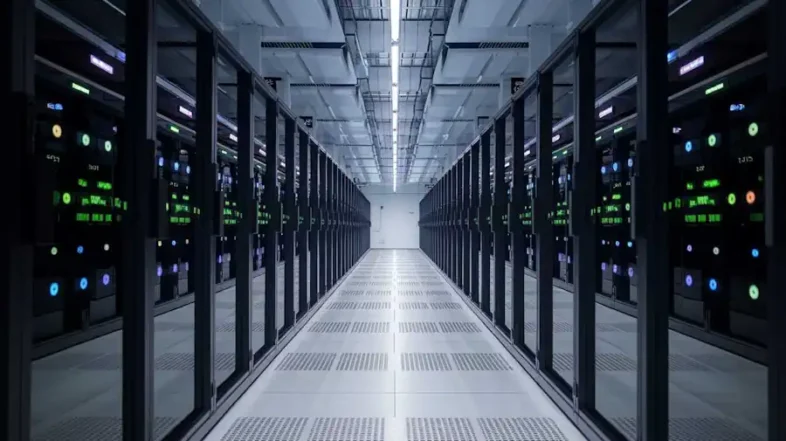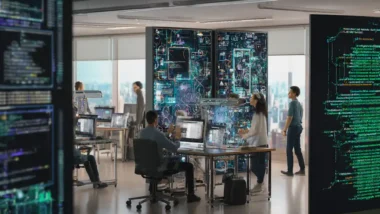Listen to a Summary of this Article
As artificial intelligence continues to dominate tech investment conversations across America, Nvidia’s recent announcement of a staggering $100 billion investment in OpenAI has intensified concerns about a potentially dangerous financial bubble.
This massive funding commitment, aimed at supporting OpenAI’s data center expansion, exemplifies a pattern of “circular” financing that has some Wall Street analysts drawing uncomfortable parallels to the dot-com crash that devastated U.S. tech markets at the turn of the century.
Table of Contents
Analysis: The circular financing fueling America’s AI boom
Nvidia, now the world’s most valuable publicly traded company, has established a pattern of investing in or lending money to its own customers. While vendor financing exists across many industries, the scale and interconnected nature of these AI deals raises questions about whether they artificially inflate perceptions of market demand. For U.S. investors still scarred by memories of the dot-com bubble, these circular transactions evoke troubling echoes of past market collapses.
The full extent of Nvidia’s financial backstopping of the AI sector remains difficult to quantify precisely. Many individual investments fall below the threshold requiring disclosure in financial filings, despite their potential collective significance. Further complicating matters are the interlocking relationships – Nvidia invests in OpenAI, which purchases services from cloud providers that Nvidia has also invested in, who then buy Nvidia GPUs – creating a tangled web of capital flows that obscures the true nature of demand.
How Nvidia’s investments reshape startup financing
Two prominent examples of Nvidia’s circular investments include OpenAI and CoreWeave. Beyond the latest $100 billion commitment, Nvidia had previously participated in a $6.6 billion investment round in OpenAI in October 2024. The chipmaker also owns approximately 7% of CoreWeave – a stake worth about $3 billion – which supplies data center capacity to OpenAI while simultaneously purchasing Nvidia GPUs.
These investments deliver benefits beyond mere cash infusion. Jay Goldberg, an analyst with Seaport Global Securities, compares such arrangements to “asking your parents to co-sign your mortgage,” enabling companies like OpenAI and CoreWeave to access debt financing at significantly lower interest rates than they could otherwise secure. While typical startups financing data centers might borrow at rates as high as 15%, Nvidia’s backing allows these companies to secure terms closer to what established corporations like Microsoft or Google might pay.
Are we witnessing a replay of the dot-com collapse?
For market veterans, Nvidia’s financing arrangements bear uncomfortable similarities to the excesses that preceded previous tech market collapses. During the dot-com bubble, telecom equipment manufacturers, including Nortel, Lucent, and Cisco, extended financing to startups to purchase their equipment. Just before the 2001 market crash, the top five telecom equipment makers had provided customer financing exceeding 123% of their combined earnings.
When that bubble burst, many customers went bankrupt, leaving equipment makers holding bad debt that contributed to devastating losses. Networking equipment businesses lost more than 90% of their value over the ensuing decade. Even more problematic were companies like Global Crossing that engaged in direct “revenue roundtripping” – paying money to another company for services, then having that company purchase equipment of equal value.
Stacy Rasgon, an analyst with Bernstein Research, acknowledged in an investor note that Nvidia’s latest OpenAI investment “will clearly fuel ‘circular’ concerns.” Meanwhile, Seaport Global’s Goldberg described the deals as having “a whiff of circular financing” and being emblematic of “bubble-like behavior.”
The financial math behind Nvidia’s customer investments
Wall Street research firm NewStreet Research estimates that for every $10 billion Nvidia invests in OpenAI, it will see $35 billion worth of GPU purchases or lease payments – equivalent to about 27% of Nvidia’s annual revenues last fiscal year. While this return makes such financing attractive, it also raises serious questions about AI valuations and market sustainability.
The lease arrangements in Nvidia’s latest OpenAI investment could prove particularly problematic. By leasing GPUs rather than requiring outright purchases, Nvidia spares OpenAI from accounting for high depreciation rates, improving OpenAI’s bottom line. However, this shifts depreciation costs to Nvidia itself, along with the risk of being stuck with unwanted GPU inventory if AI workload demand fails to meet CEO Jensen Huang’s optimistic projections.
As AI company valuations continue their stratospheric rise, the distance between market concern and potential crisis appears to be narrowing. For American investors and the broader U.S. economy, the question remains whether we’re witnessing a genuine technological revolution or the inflation of another devastating tech bubble poised to burst.


